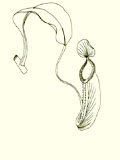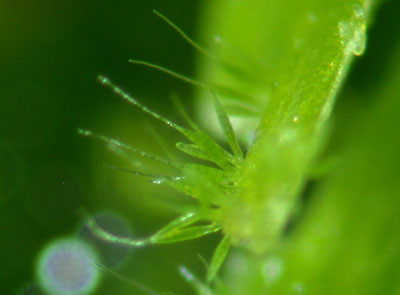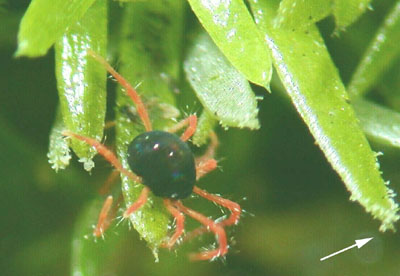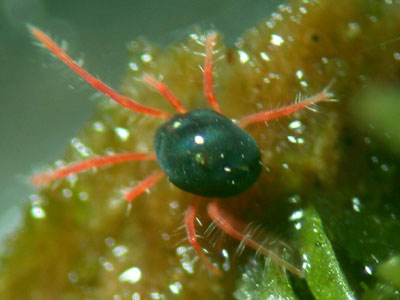

 |
 |
Flora (pdf)
Gemmae of the moss Octoblepharum albidum taken as food by spider mites
by Zhang L.1,2, Paul P.H. But,2 and Ma P.2
1South China Institute of Botany, The Chinese Academy of Sciences, Guangzhou 510650 and 2Department of Biology, The Chinese University of Hong Kong, Shatin, NT, Hong Kong.
It is widely known that some bryophytes, mainly their gametophytes and capsules, are eaten by mammals, birds, and insects (Longton, 1990; Slack, 1988). No reports that we have found so far indicate that the gemmae of bryophytes are taken as food by invertebrates. We here report such an example from Hong Kong.
During a field survey at Kadoorie Farm & Botanic Garden on October 31, 2002, we collected some fresh material of Octoblepharum albidum on tree trunks at Orchid Heaven at 400 m altitude. The sample was kept in a petri dish (with cover) in our laboratory in room temperature. Abundant gemmae were found on the sample. The mature gemmae are commonly borne singly along the upper 1/3–1/2 leaf margins. They are fusiform, 110–220 (250) μm long, and consist of 4–8 cells. One (occasionally two), hyaline hair-like projection is frequently developed at the distal ends of the gemmae. Several weeks later (November 28, 2002), the sample was observed again. It was surprising to find that almost all gemmae were lost leaving only the basal cells of the gemmae. At the same time, several spider mites (Tetranychus sp.?) were found actively crawling on the moss and eating the remaining gemmae. The mite body is dark red to black in color, 1-1.5 mm in length, with eight red legs covered by sparse spines.
It is easy to find insects and other invertebrates dwelling on bryophytes, especially in streamside habitats. But this is the first time bryophyte gemmae have been documented as food for invertebrates in Hong Kong.
 |
|
Fig.1. The mature gemmae of Octoblepharum albidum on the upper leaf margin before spider mite eaten. |
 |
|
Fig. 2. A spider mite on the leaf tips of Octoblepharum albidum, noting the arrow point indicating the remnant gemma bases. |
 |
| Fig. 3. Enlarged photo of a spider mite. |
Acknowledgements
Sincere thanks were extended to Kadoorie Farm & Botanic Garden for allowing us to do the field survey, Dr Roger Kendrick for suggesting the insect belongs to a kind of mite, and Dr Richard T. Corlett for correcting the text.
Bibliography
Longton, R.E. (1990). The role of bryophytes and lichens in terrestrial ecosystems. In: Bates, J.W. and Farmer, A.M. (eds.), Bryophytes and lichens in a changing environment, Clarendon Press: Oxford, pp.32-76.
Slack, N. G. (1988). The ecological importance of lichens and bryophytes. In: Nash, T.H. and Wirth, V. (eds.) Lichens, bryophytes and air pollution, J. Cramer: Berlin. Stuttgart, pp. 23-53.
|
|
P.15 |
|
Porcupine! |
 Copyright © 2000 |